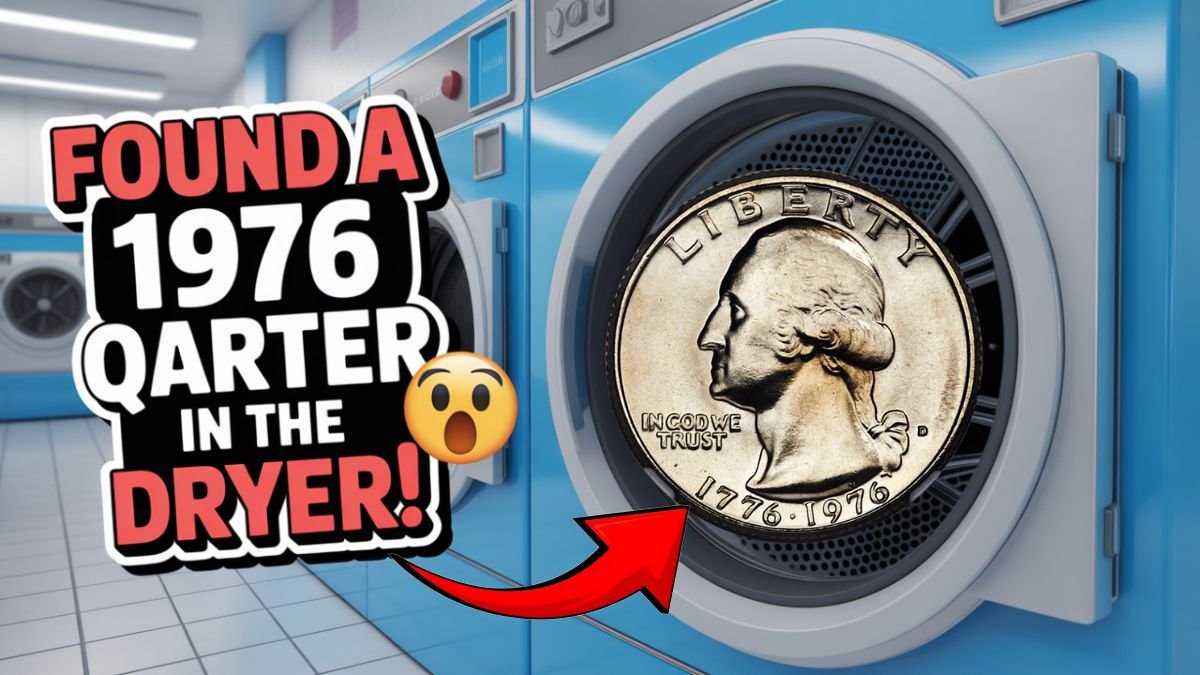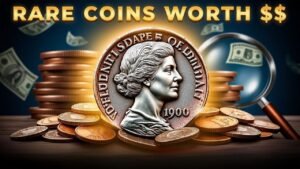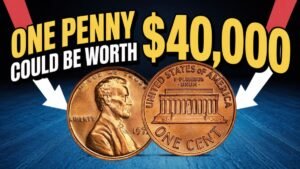Last week, I went to a laundromat near me to wash and dry my clothes. As usual, I started to put the quarters in the old dryer one by one. But I was stunned when I came across a coin. On the back of the coin was a very familiar yet different design—a colonial soldier beating a drum and holding a torch. It was not the usual quarter on which we usually see the American Eagle. I eagerly turned the coin over and looked at the front: it was inscribed “1776-1976.” It was the Bicentennial quarter, a historical symbol dedicated to the 200th anniversary of America’s independence.
The coin suddenly opened up a memory lane and I began to remember my grandfather—his stories, his affection, and the little tin box in which he kept such coins.
Memory of Grandpa Related to Coins
My grandfather, George, was a very simple but thoughtful man. He lived a simple life, but he had a few possessions that were deeply emotional to him. One of the most special was a small tin box where he kept a few old coins—mostly quarters, especially from the 1970s.
When I was a kid, I would often sit at the kitchen table and watch him sort through the coins. He always had a mug of hot coffee in front of him, and he would pick up each one and look at it carefully. As he picked out the Bicentennial quarter, his face would light up with a smile, and he would say, “This one reminds me of the greatest celebration America has ever had.”
As a kid, I may not have understood the depth of his words, but today, when I held the coin in my hands, I fully felt the emotion behind his words.
1776–1976 Bicentennial Quarter: Why is it so special?
Most quarters in circulation in the United States have an eagle on the reverse, a symbol of the country’s power and dignity. But in 1976, to mark the 200th anniversary of American independence, the U.S. Mint released a special design. This design featured a Colonial Drummer Boy—a young soldier from the American Revolution who would play drums to encourage the troops.
This special coin was designed by an artist named Jack L. Ahr. This design not only expressed the historical spirit of the time but also made people feel that they were part of a historical period.
These coins were issued in two types—one in clad (copper-nickel mixture) for general circulation and the other in a special edition 40% silver, which was released in limited quantities for collection. The coin I got was a normal version, but the emotions attached to it were no less than a collectible treasure.
Grandpa’s Parade—An Experience of Living History
Grandpa often told a story that I never got bored of listening to. In July 1976, he and Grandma traveled to Philadelphia—not just because they wanted to travel, but because they wanted to be part of the historic moment when America celebrated its bicentennial.
They told us how people lined the streets with flags, bands played, and patriotism gushed from every street and corner. They saw a live reenactment of the Declaration of Independence—as if time itself had turned back.
Grandpa would say, “It was like the whole country breathed at once that day. Like we all remembered who we are and who we want to be.” They brought home a Bicentennial quarter from that trip—it may have been worth only 25 cents, but emotionally it was priceless.
Is value really just money?
The quarter I found last week—it had no real market value. It was the clad version, which is still worth 25 cents unless it’s uncirculated or in mint condition.
But for me, its value was tied to the memories of my grandfather. That one little coin brought me back to the depths of his stories, made me feel the warmth of that kitchen, and made me realize that history isn’t just in books—sometimes it’s hidden in our wallets, tinkling in our pockets.
Conclusion: One coin, the voice of a generation
Finally, I put the quarter in the dryer, but not before taking a picture of it on my phone—as if I wanted to capture the moment.
The coin wasn’t about money. It was a gesture, a connection—the voice of a bygone generation, still alive within us.
So many things in our lives go by unnoticed, unthought of. But when we stop and look at something—even a coin—we realize how many stories it holds.
The next time you find a 1976 quarter, don’t brush it off as just another 25-cent coin. Hold it for a moment, and think about whose pocket it may have been in and whose fist it may have been held in while waving a flag at a parade.
FAQs
Q. What is the 1776–1976 Bicentennial quarter?
A. The Bicentennial quarter was issued to commemorate the 200th anniversary of American independence and features a Colonial drummer boy on the reverse side.
Q. Is the 1976 quarter rare or valuable?
A. Most Bicentennial quarters are not rare and are worth 25 cents, though uncirculated or 40% silver versions can be worth more.
Q. Who designed the Bicentennial quarter?
A. The reverse side featuring the drummer boy was designed by Jack L. Ahr.
Q. How many types of Bicentennial quarters were made?
A. Two types were produced: a copper-nickel circulating version and a 40% silver collector’s edition.
Q. Why do people collect the 1976 quarter?
A. Many people collect it for sentimental reasons, as it symbolizes a historic moment in U.S. history and often holds personal memories.


